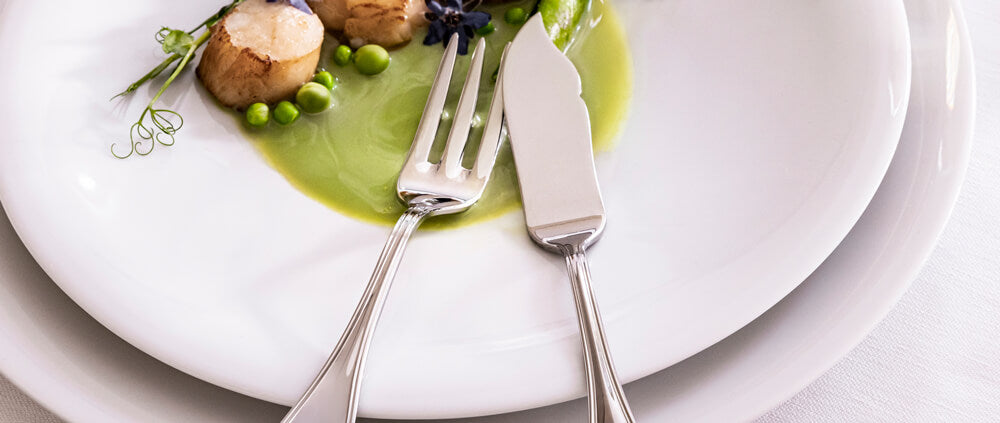For any kitchen professional, the presentation of a dish is just as important as the taste. The meticulous art of slicing en crote dishes not only requires precision but also a deep understanding of the structure and components of the dish. In this comprehensive guide, we will explore the best practices for slicing these elegant dishes, ensuring that each slice is a masterpiece in itself.
The term 'en crote' refers to dishes that are encased in a crust, often made of pastry, which seals in flavors and creates a stunning visual appeal. From beef Wellington to salmon en crote, the art of slicing these dishes involves maintaining the integrity of the pastry while revealing the beautifully cooked filling inside. Whether you're a seasoned chef or an enthusiastic culinary student, mastering the technique of slicing en crote dishes is essential for elevating your culinary creations.

Understanding the Structure of En Crote Dishes
Before diving into the slicing technique, it's crucial to understand the structure of en crote dishes. Typically, these dishes consist of a protein or vegetable filling wrapped in a layer of pastry. The pastry acts as a barrier, keeping the filling moist during cooking and providing a delightful contrast in texture.
Successful slicing begins with selecting the right knife. A sharp serrated knife is often recommended, as it can effortlessly cut through the delicate pastry without crushing it. However, the choice of knife may vary depending on the specific en crote dish you're working with. For insights into knife etiquette and types of knives suitable for slicing en crote dishes, you can explore [this guide on knife etiquette](https://knives.shop/blogs/kitchen-knives/knife-etiquette-in-luxury-restaurants) from Knives Shop.
Preparing for Precision: Essential Tools and Tips
Having the right tools is half the battle won when it comes to slicing en crote dishes. In addition to a sharp knife, consider other essential tools such as a cutting board with a non-slip surface and a spatula for transferring slices without breaking the pastry.
Before slicing, allow the en crote dish to rest for a few minutes after baking. This resting period allows the juices to redistribute, preventing them from spilling out and ensuring that each slice retains its moisture. If you're handling delicate pastry, a gentle touch is key. Avoid pressing down too hard to maintain the dish's structure.
Step-by-Step Slicing Technique
- Position the dish: Place the en crote dish on a stable cutting board, ensuring it's secure and won't slide during slicing.
- Choose the starting point: Identify the center of the dish as your starting point. This ensures even slices on both sides.
- Use a sawing motion: With a serrated knife, use a gentle sawing motion to cut through the pastry. Avoid pressing down directly, as this can crush the pastry.
- Maintain even pressure: Apply consistent pressure to ensure each slice is uniform in size and thickness.
- Transfer with care: Use a spatula to lift each slice gently and transfer it to the serving platter.
For additional insights into dining etiquette and the art of slicing, you can refer to [this article on European dining knife etiquette](https://knives.shop/blogs/kitchen-knives/european-dining-knife-etiquette) from Knives Shop, which offers valuable tips for handling knives with precision.
Enhancing Presentation: Tips for a Stunning Display
The visual appeal of en crote dishes plays a significant role in their overall presentation. Here are some tips to enhance the presentation of your sliced en crote dishes:
Garnish thoughtfully: Add fresh herbs or a drizzle of sauce to complement the flavors and add a pop of color.
Plate with precision: Arrange the slices neatly on a platter, ensuring each slice is visible and accessible to guests.
For further guidance on enhancing dining experiences and presentation techniques, you might find this [guide on American dining knife etiquette](https://knives.shop/blogs/kitchen-knives/american-dining-knife-etiquette) insightful.
Common Mistakes to Avoid
Even experienced chefs can encounter challenges when slicing en crote dishes. Here are some common mistakes to avoid:
- Rushing the process: Take your time to ensure each slice is perfect. Rushing can lead to uneven slices and a messy presentation.
- Inadequate resting time: Skipping the resting period can result in juices spilling out, leading to a soggy crust.
- Using a dull knife: A dull knife can crush the pastry, affecting the overall appearance and texture of the dish.
To deepen your understanding of dining etiquette and avoid common pitfalls, you can explore [this informative guide on dining etiquette](https://www.gentlemansgazette.com/eat-fork-knife-etiquette/) from the Gentleman's Gazette.
Conclusion: Elevating Your Culinary Skills
Mastering the art of slicing en crote dishes is a testament to a chef's skill and attention to detail. By understanding the structure of these dishes, selecting the right tools, and employing precise techniques, you can create visually stunning and delectable presentations that captivate diners.
Whether you're preparing a classic beef Wellington or experimenting with innovative vegetable en crote creations, the techniques discussed in this guide will enhance your culinary repertoire. With practice and patience, you'll be able to slice en crote dishes with confidence, impressing guests and elevating your culinary expertise.

FAQs: Common Questions About Slicing En Crote Dishes
What knife is best for slicing en crote dishes?
A sharp serrated knife is often recommended for slicing en crote dishes, as it can cut through delicate pastry without crushing it.
How can I prevent the pastry from becoming soggy?
Allowing the dish to rest after baking helps redistribute juices and prevents the pastry from becoming soggy. Using a sharp knife also helps maintain the integrity of the pastry.
Can I prepare en crote dishes in advance?
Yes, en crote dishes can be prepared in advance and stored in the refrigerator. However, it's best to bake them fresh before serving to ensure a crisp pastry.
This article contains affiliate links. We may earn a commission at no extra cost to you.


























